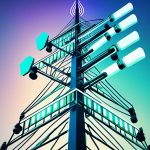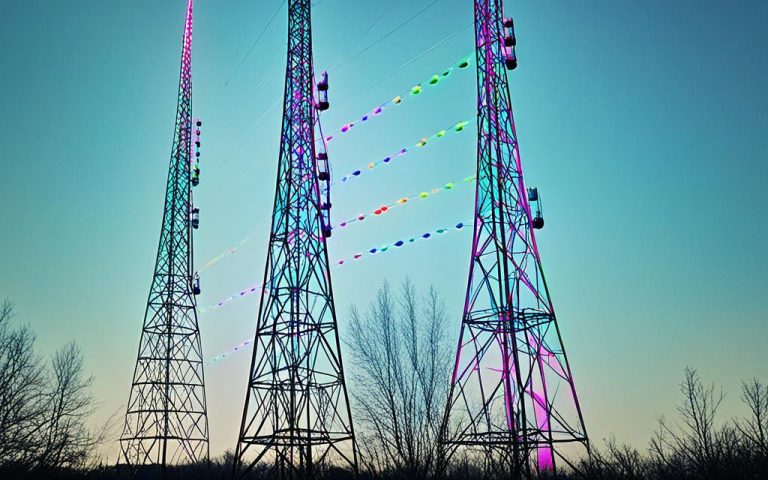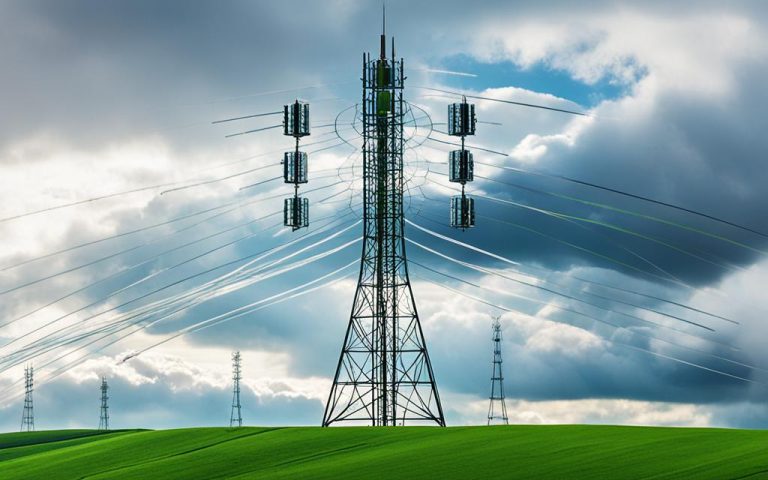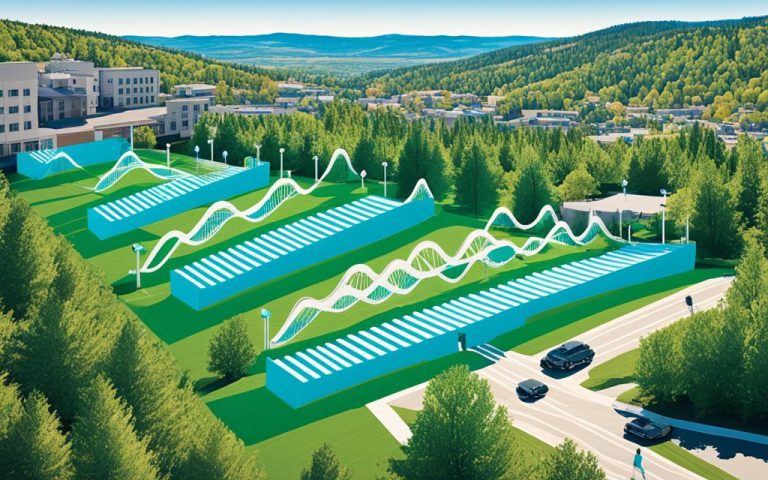In today’s technology landscape, the debate between Fixed Wireless and Fiber Optics as connectivity solutions has gained significant attention. While Fiber Optic Cable technology has been the preferred choice for many network deployments, Fixed Wireless Internet access remains a viable option for service providers, offering performance consistency, high bandwidth, low latency, faster time-to-market, and lower deployment and maintenance costs. However, it is important to understand the differences between these two options to make an informed decision for your connectivity needs.
When it comes to internet options, Fixed Wireless and Fiber are two popular choices that are constantly compared. Both options have their advantages and it’s crucial to evaluate them based on your specific requirements. Let’s dive deeper into the comparison of Fixed Wireless vs. Fiber to help you understand which connectivity solution may be the best fit for you.
Breaking the Myth of Fiber – It May Be Too Good to Be True
Despite its reputation for reliability and high capacity, Fiber Optic Cable technology may not always be the ideal solution for network deployments, especially in rural communities. The perceived benefits of Fiber may lead to unreasonable expectations and challenges for service providers. Government-funded projects often face delays and difficulties in meeting buildout commitments, and the high cost of fiber deployment may not be feasible for certain communities.
Fixed Wireless Internet, on the other hand, offers performance consistency, dependability, and high bandwidth at a lower cost, making it a more practical choice in many cases.
Unrealistic Expectations and Challenges
The Myth of Fiber has created a false belief that it is the ultimate solution for all network deployments. However, the reality is that fiber installations can be complex and time-consuming, especially in rural areas. Government-funded fiber projects often encounter delays due to bureaucratic processes and difficulties in meeting buildout commitments. These challenges can result in prolonged wait times for communities in need of reliable internet access.
“The high cost of fiber deployment may not be feasible for certain communities.”
Fixed Wireless Solution and Practicality
Fixed Wireless Internet provides a reliable and cost-effective alternative to fiber in rural network deployments. By utilizing radio signals to transmit data, Fixed Wireless can deliver high-speed internet with comparable performance to fiber. The technology is well-suited for areas with challenging terrains or limited infrastructure, offering a viable solution for communities where fiber deployment may not be feasible.
With Fixed Wireless, service providers can rapidly deploy networks, reducing time-to-market and ensuring faster internet access for underserved areas. The lower deployment and maintenance costs of Fixed Wireless make it an attractive option, allowing for more efficient use of resources.
The Advantage of Performance Consistency
The myth surrounding Fiber’s superior performance is often based on its theoretical potential, rather than real-world conditions. While Fiber can indeed offer high capacity, the actual performance may not always meet expectations due to various factors such as network congestion or faulty infrastructure.
Fixed Wireless Internet, on the other hand, provides consistent performance regardless of the distance from the access point. Users can experience dependable internet speeds, enabling them to work, study, and stream seamlessly. This reliability is particularly essential in rural communities where connectivity is crucial.
Overcoming Cost and Feasibility Constraints
Compared to Fiber, Fixed Wireless Internet offers a more cost-effective option for rural network deployments. The high cost of fiber deployment, which can amount to thousands of dollars per mile, makes it economically impractical for certain communities. In contrast, Fixed Wireless can be deployed at a fraction of the cost, allowing service providers to extend their network coverage more efficiently.
The practicality of Fixed Wireless extends beyond cost benefits. It eliminates the need for extensive digging, burying cables, and dealing with complex infrastructure challenges. As a result, service providers can swiftly bring high-speed internet to underserved areas, bridging the digital divide in rural communities.
In conclusion, the Myth of Fiber as the ultimate connectivity solution is debunked in light of the challenges and limitations it presents in rural network deployments. Fixed Wireless Internet offers a reliable, high-capacity, and cost-effective alternative, addressing the needs of underserved communities. By embracing the practicality and advantages of Fixed Wireless, service providers can ensure that reliable internet access becomes a reality for rural areas.
Fiber vs Wireless Internet: Breaking It Down
When it comes to choosing between fiber and wireless internet, it’s essential to understand the key differences that set these options apart. Let’s break it down by looking at three important factors: installation time, internet speed, and cost.
Installation Time
One of the critical considerations is the time it takes to install both fiber and wireless internet connections. Fiber optic installations often require months or even years to complete, primarily due to the extensive infrastructure and physical cable installations involved. On the other hand, wireless links can be set up and fully operational within a matter of days. This significant difference in installation time can be a crucial aspect for businesses and individuals who require a quick and efficient internet solution.
Internet Speed
When it comes to internet speed, both fiber and fixed wireless connections can provide comparable speeds for most users. Speeds can range from 10 Mbps to 500 Mbps, depending on the service provider and location. Whether you choose fiber or wireless internet, you can expect reliable and high-speed connectivity to meet your online needs, whether it’s for streaming, online gaming, or other bandwidth-intensive activities.
Cost
Cost is another significant consideration when comparing fiber and wireless internet options. Fiber optic deployment often comes with a high price tag. Recent estimates show that fiber deployment can cost anywhere between $60,000 to $80,000 per mile. On the other hand, wireless links can be deployed at a fraction of the cost, making it a more affordable choice for many organizations and communities.
Now, let’s visualize the differences between fiber and wireless internet in a concise table:
| Fiber Internet | Wireless Internet |
|---|---|
| Requires months or years for installation | Installed and operational within days |
| Comparable speeds ranging from 10 Mbps to 500 Mbps | Comparable speeds ranging from 10 Mbps to 500 Mbps |
| High deployment costs ($60,000 to $80,000 per mile) | Lower deployment costs |
As we can see from the table, both fiber and wireless internet provide similar speeds for users, but the key differences lie in the installation time and cost. Fiber may offer higher speeds, but the lengthy installation timeline and significant costs make wireless internet an attractive alternative for many.
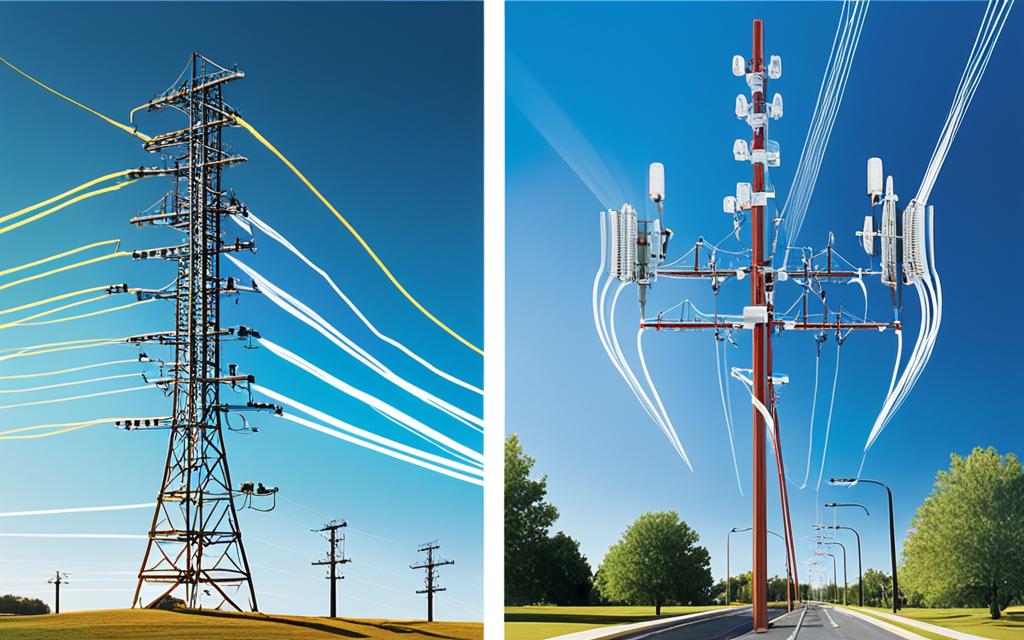
It’s crucial to evaluate your specific needs and budget when choosing between fiber and wireless internet. Consider factors such as installation time, speed requirements, and cost implications to make an informed decision that best suits your connectivity needs.
Latency, Ease of Installation, and Dependability
When it comes to choosing the right connectivity solution, several factors need to be considered. In this section, we will explore the importance of latency, ease of installation, and dependability in the context of Fixed Wireless and Fiber Optics.
Latency: A Crucial Consideration
Latency, the time it takes for a signal to travel from one point to another, is a critical factor in determining the efficiency of any network. Fiber Optics is often touted as having low latency, but the reality is that properly designed and deployed Fixed Wireless links can offer comparable or even lower latency.
For real-time transactions and applications where every millisecond counts, low latency is essential. Wireless links can deliver consistent and low latency as low as 4 μs, ensuring fast response times and smooth operation.
Ease of Installation: Simplifying Deployment
When it comes to installation, Fiber Optics can be a complex and time-consuming process. Challenges such as geography, distance, and land ownership issues can significantly prolong the installation timeline.
On the other hand, Fixed Wireless links provide a more straightforward solution. They can quickly overcome installation hurdles, allowing for rapid and affordable deployments. This ease of installation makes Fixed Wireless an attractive option for network deployments that require a timely and hassle-free setup.
Dependability: Ensuring Reliable Connectivity
Dependability plays a crucial role in ensuring uninterrupted connectivity. While Fiber Optics offers reliable performance, it can be vulnerable to damage from various factors such as construction activities or natural disasters.
Fixed Wireless, when properly designed and deployed, can offer a high level of dependability. With careful planning and implementation, Fixed Wireless links can achieve reliability as high as 99.999%, ensuring consistent and robust connectivity.
Overall, addressing latency, ease of installation, and dependability is crucial when evaluating connectivity solutions. Fixed Wireless offers comparable or lower latency, ease of installation, and high dependability, making it a compelling choice for various network deployments.
By carefully considering these factors, businesses and service providers can make informed decisions that align with their specific connectivity requirements.
Security, Aerial Fiber Installations, and Endurance and Redundancy
When considering connectivity options, security plays a crucial role. While Fiber is often perceived as more secure, wireless networks can provide the highest levels of security and resistance to breaches by incorporating military-grade protocols and encryption. This ensures the confidentiality and integrity of data transmitted over the network.
Aerial fiber installations, on the other hand, present additional challenges. These installations involve combining fiber cables with other cables, which can lead to disruptions and complexities when maintenance or replacements are required. This can result in prolonged downtime and additional costs.
To ensure uninterrupted service and mitigate the impact of outages or service degradation, both Fiber and wireless networks often incorporate redundancy and endurance measures. Wireless networks, in particular, are frequently used as backup systems for both Fiber and wireless deployments. These backup systems provide an alternative connection in case of primary network failure, preventing disruptions and ensuring continuous connectivity.
By weighing the factors of security, aerial fiber installations, and endurance and redundancy, businesses can make informed decisions when choosing between Fiber and wireless options for their connectivity needs.
Benefits of Wireless Networks
| Factors | Wireless | Fiber |
|---|---|---|
| Security | Ability to incorporate military-grade protocols and encryption | Perceived as more secure |
| Aerial Fiber Installations | Minimal disruptions and complexities | Involves mixing with other cables, leading to challenges in maintenance and replacements |
| Endurance and Redundancy | Incorporates wireless backup systems for uninterrupted service | Requires additional redundancy measures to ensure continuous connectivity |
Summary
In summary, when comparing fixed wireless and fiber optic cable technology as connectivity solutions, it is important to carefully evaluate the specific needs and circumstances of each network deployment. While fiber optic cable has been the preferred choice for many deployments, fixed wireless internet offers several advantages such as performance consistency, dependability, high bandwidth, lower latency, faster time-to-market, and lower cost. Both options have their strengths and weaknesses, and in certain scenarios, a combination of fiber and fixed wireless may be the optimal solution.
It is crucial to consider factors such as installation time, internet speed, cost, latency, ease of installation, dependability, security, and endurance and redundancy when selecting a connectivity solution. Wireless links can be installed and operational within days, while fiber deployments can take months or even years. Both fiber and fixed wireless can provide comparable internet speeds, but the cost of fiber deployment is significantly higher. Fixed wireless links offer low latency and easy installation, overcoming challenges faced by fiber technology. Additionally, wireless networks can incorporate robust security measures and serve as backup systems for both fiber and wireless deployments.
With its advantages in terms of consistency, dependability, bandwidth, latency, time-to-market, and cost, fixed wireless internet is a compelling alternative to fiber optic cable technology as a connectivity solution.
| Factors | Fiber Optic Cable | Fixed Wireless |
|---|---|---|
| Installation Time | Months to years | Days |
| Internet Speed | Comparable with fixed wireless | Comparable with fiber optic cable |
| Cost | High | Lower than fiber optic cable |
| Latency | Depends on network and location | Consistently low |
| Ease of Installation | Complex, influenced by geography and ownership | Easy, overcoming challenges faced by fiber |
| Dependability | Vulnerable to damage | Reliable when properly deployed |
Conclusion
In today’s evolving connectivity landscape, the debate between Fixed Wireless and Fiber Optics as broadband solutions has become increasingly relevant. While Fiber has long been seen as the standard choice, Fixed Wireless Internet is gaining recognition for its impressive performance, reliability, and cost-effectiveness. It is crucial to understand the differences and benefits of each option to make an informed decision for your broadband connectivity needs.
When considering broadband connectivity options, it is important to weigh various factors such as installation time, internet speed, cost, latency, ease of installation, dependability, security, and endurance and redundancy. Both Fiber and Fixed Wireless have their unique advantages and challenges. Fiber, with its long-standing reputation, offers high capacity and reliability, but it may not always be practical, especially in rural areas or for communities facing budget constraints.
Fixed Wireless Internet, on the other hand, provides performance consistency, high bandwidth, low latency, and faster time-to-market at a lower cost. Its ease of installation and versatility make it a viable solution for many deployments. While Fiber is often considered more secure, wireless networks can incorporate robust security protocols to ensure data protection and encryption. Additionally, wireless links can serve as backup systems in both Fiber and wireless deployments, enhancing network endurance and redundancy.
In conclusion, the choice between Fixed Wireless and Fiber Optics for broadband connectivity is not a straightforward one. Evaluating your specific needs, circumstances, and priorities will enable you to determine the optimal solution. Consider the advantages and limitations of each option carefully, and leverage their distinct features to meet your connectivity requirements effectively.
FAQ
What is the difference between Fixed Wireless and Fiber Optics?
Fixed Wireless and Fiber Optics are different connectivity solutions. Fixed Wireless uses wireless links to provide high bandwidth and low latency internet access, while Fiber Optics uses fiber optic cables to transmit data.
Which option is faster, Fixed Wireless or Fiber Optics?
Both Fixed Wireless and Fiber Optics can offer comparable internet speeds, ranging from 10 Mbps to 500 Mbps.
Is installation time a factor to consider?
Yes, installation time is an important consideration. Fiber Optics often requires months or even years to build, while Fixed Wireless links can be installed and operational within days.
Which option is more cost-effective?
Fixed Wireless is generally more cost-effective compared to Fiber Optics. The cost of fiber deployment can be significantly higher, while wireless links can be deployed at a fraction of the cost.
What about latency?
Both Fixed Wireless and Fiber Optics can offer low latency. Wireless links can provide consistent and low latency as low as 4 μs, which is important for real-time transactions and applications.
Are there differences in ease of installation?
Yes, there are differences in ease of installation. Fiber Optics often require complex installations due to geography, distance, and land ownership issues, while wireless links can be deployed quickly and affordably.
Which option is more dependable?
While Fiber Optics can be susceptible to damage from various factors, properly designed and deployed Fixed Wireless links can offer reliability as high as 99.999%.
Are wireless networks as secure as Fiber Optics?
Yes, wireless networks can be as secure as Fiber Optics. They can incorporate military-grade protocols and encryption to provide the highest levels of security and resistance to breaches.
How do aerial fiber installations affect deployments?
Aerial Fiber installations can present additional challenges, as they are often mixed with other cables and can cause disruptions and complexities when maintenance or replacements are needed.
Which option offers endurance and redundancy?
Both Fixed Wireless and Fiber Optics can offer endurance and redundancy. Wireless networks are often used as backup systems in both Fiber and wireless deployments to ensure uninterrupted service in case of outages or service degradation.









